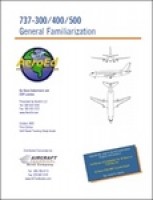1-877-795-2278 | info@aircraftspruce.ca
Aircraft Spruce Canada
Brantford, ON Canada
Corona, CA | Peachtree City, GA
Chicago, IL | Wasilla, AK
Aircraft Spruce Canada
Brantford, ON Canada
Corona, CA | Peachtree City, GA
Chicago, IL | Wasilla, AK
FREE SHIPPING ON ORDERS OVER $699 (SOME EXCLUSIONS APPLY) | 877-795-2278
Model B-17G
$358.00/Each
Part# 13-10459
MFR Model# A2662
MFR Model# A2662
Overview
|
This collectible 1/62 scale model of the B-17 represents one of the iconic aircraft of World War II, Boeing’s Flying Fortress. This model B-17G shows “Nine O’Nine,” a B-17G owned and operated by the B-17F Memphis Belle, recalled in his 2001 autobiography his reaction to seeing the B-17. “All those other planes that had seemed so intoxicating when I was cutting my teeth on them – the yellow PT-17s, the Lockheed Hudson, all the rest of them—well, it was as if they never existed.” Morgan wrote in “The Man Who Flew the Memphis Belle.” “One look at the B-17, silver and elegant and indomitable-looking on the tarmac, bristling with armature, that massive reassuring tailfin crowning its splendid architecture, and the world started all over again.” As far as its nickname “Flying Fortress,” Morgan wrote, “To me and the thousands of men who flew her, “goddess,” would not have been overdoing it.” Although the British used a few B-17Cs as early as 1941, it remained for the Eighth Air Force to bring the B-17 into its own. The first American B-17 unites began arriving in England in May 1942, with the first mission – to bomb railroad yards in France – flown on Aug. 17, 1942. Then-Maj. Paul Tibbets, who would fly the B-29 Enola Gayto drop an atomic bomb on Hiroshima, led the mission. It would be almost another year before the Eighth Air Force would begin its bombing offensive against Germany in earnest. By the summer and fall of 1943, large formations of B-17s were flying missions deep into Germany. A lack of fighter that could escort the bombers to the target and back added to the vulnerability of the bomber formations and despite the heavy firepower on each B-17, losses were heavy. On Oct. 14, 1943, 59 bombers out of 291 launched were lost on a mission to bomb ball-bearing factories in Schweinfurt. The losses forced a suspension of raids into Germany until long-range fighter escorts were available. In 1944 and 1945, formations of hundreds of B-17s were again flying deep into Germany, with long-range P-51 Mustang fighters helping ease losses. By war’s end, the B-17 was obsolete, with the B-29 Superfortress supplanting it as the nation’s top-of-the-line bomber. Thousands were scrapped, but others flew on as drones, drone controllers and rescue craft, as well as in other support roles. The last operational B-17 mission by the U.S. Air Force was flown on Aug. 6, 1959, when a B-17 controlled a drone B-17 as a target for an air-to-air missile test. The original Nine O’Nine served with the 91st Bomb Group, completing 140 missions – more than any other B-17 – and never lost a crewman. The current Nine O’Nine was accepted for military service on April 7, 1945, too late for war service. She was configured for air-sea rescue, and was later used as a weapons effects test article for three separate nuclear tests in the 1950s. After 13 years to let the airframe “cool down” in radioactivity, it was sold as part of an 800-ton scrap pile – but restored to flying condition as a firefighting tanker. In 1986, after 20 years as a fire bomber, the Collings Foundation bought the aircraft and restored to her wartime configuration by Tom Reilly Vintage Aircraft. |
Q&A
Please note, Aircraft Spruce Canada's personnel are not certified aircraft mechanics and can only provide general support and ideas, which should not be relied upon or implemented in lieu of consulting an A&P or other qualified technician. Aircraft Spruce Canada assumes no responsibility or liability for any issue or problem which may arise from any repair, modification or other work done from this knowledge base. Any product eligibility information provided here is based on general application guides and we recommend always referring to your specific aircraft parts manual, the parts manufacturer or consulting with a qualified mechanic.

 Aircraft Spruce Canada
Aircraft Spruce Canada








